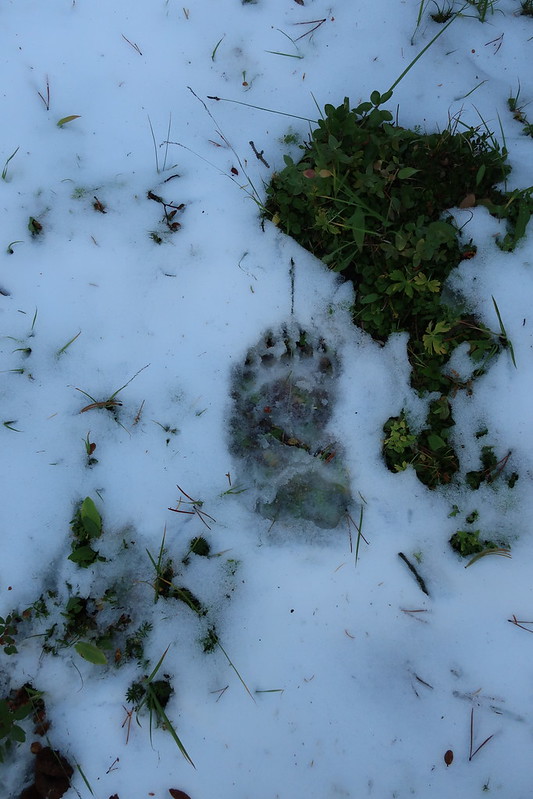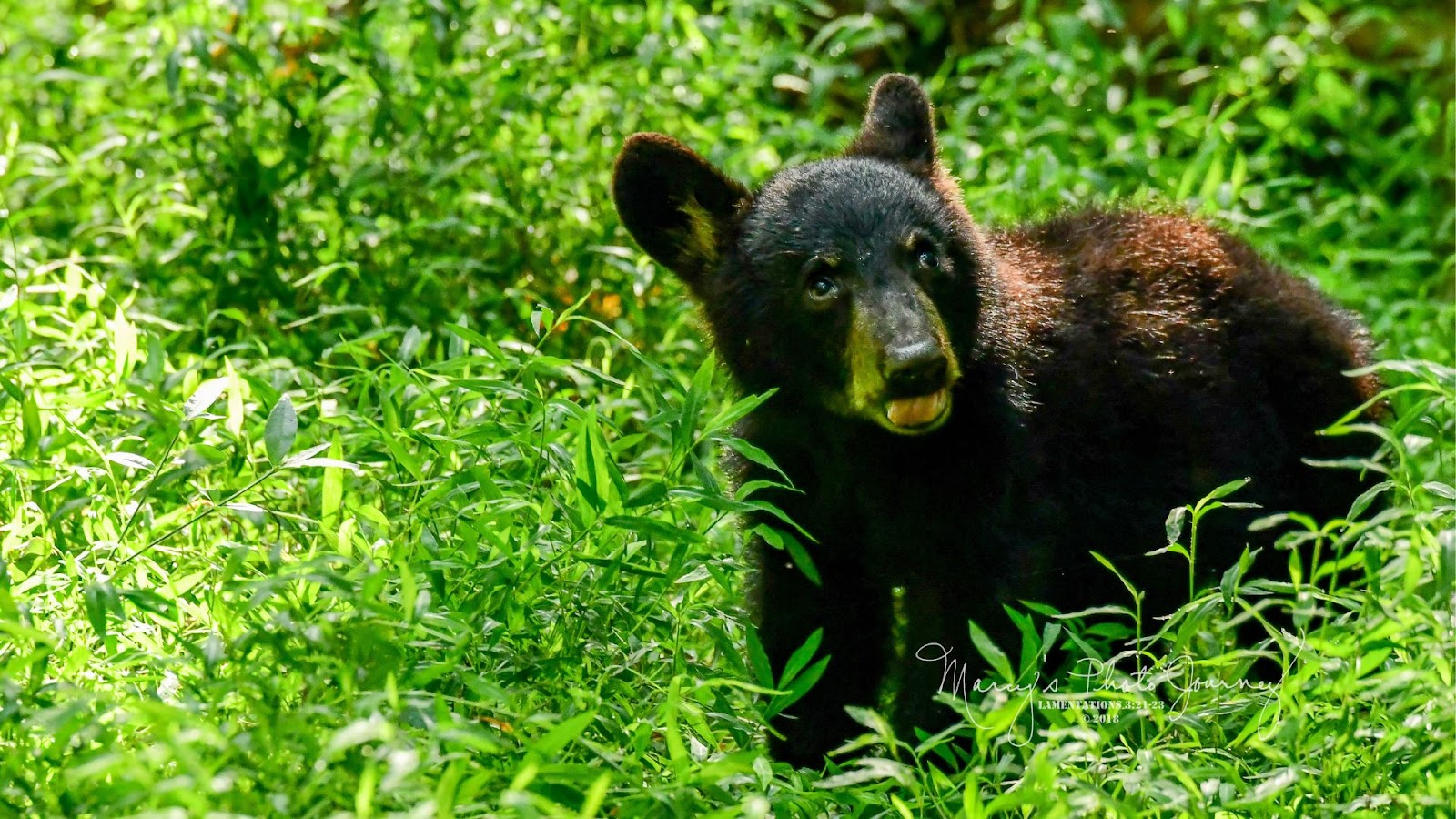Where the Wild Things (That Can Easily Kill You) Are
Most of the landscapes we backpack in have pretty clear-cut answers regarding which Potentially Hazardous Animals (PHAs) one might reasonably expect to encounter in the backcountry. PHAs are one of backpacking’s newest three-letter-acronyms (TLAs), for those In The Know (ITK), just FYI.
Humans, unfortunately, seem to exist as PHAs in every landscape desirable for backpacking. Rattlesnakes, scorpions and venomous arachnids have a fair degree of landscape coverage, while alligators occupy a considerably smaller landscape. Black bears cover a wide swath of the appealing backpacking landscapes in the continental United States, with grizzly bears occupying smaller and more sharply defined areas of habitat.
As someone who backpacks extensively in areas that are on the fringes of the expanding habitat of grizzly bears, the lack of certainty of exactly which apex predator might be ambling along the trail in front of me creates an interesting mix of apprehension and awe.

If you’re planning a backpacking trip to Glacier National Park, Yellowstone National Park, or the Bob Marshall Wilderness Complex, your odds of seeing a grizzly bear in its natural habitat are far greater than anywhere else in the Lower 48. Each of these areas have long-established regulations by their respective land management agencies to prevent human-bear conflicts, with the parks featuring dedicated infrastructure and/or explicit instructions on how and where to store food, sleep, and eat at the designated campsites. To a certain degree, I’ve found some comfort in these preventive rituals when backpacking in Glacier and Yellowstone and knowing that there’s a better-than-average chance that the previous occupants of the campsite did the same thing and, presumably, made it out of the backcountry alive.
In the national forests of western Montana and northern Idaho, where I do the majority of my backpacking, grizzly bears have begun to venture in from the Northern Continental Divide Ecosystem (to the north) and the Greater Yellowstone Ecosystem (to the southeast). Part of their historic range, the Bitterroot, Pioneer and Beaverhead Mountain ranges have been absent of sustained populations of grizzly bears for over a half-century. Food storage regulations and cultural norms for those recreating outdoors in this area are well-established in regard to preventing bear and human conflict, but it is also not terribly uncommon to come across a campsite where it is abundantly clear that those who stayed there did not follow the letter, or even the spirit, or basic “bear aware” camping. Scraps of food in the fire pit (which is seemingly always annoyingly located right next to the best place for a tent) and bits of trash (of both the micro and macro varieties) around the campsite periphery can cause a bit of justifiable unease if you’re planning to stay there that night. You can control what precautions you take, but you can’t control those of the people who camped there before you.

Being Bear-Aware, but Not Bearanoid
As grizzly sightings become more common on the fringes of the established grizzly bear ecosystems, the notion of seeing one on a trip into my local Selway-Bitterroot Wilderness and nearby public lands becomes more pronounced. When backpacking solo, as I often do, the mind tends to wander just a bit further when pondering the source of a mysterious noise outside the tent at night than it does in places without the chance of encountering a grizzly bear.
I once gave two Continental Divide Trail thru-hikers a ride on my way to a five-night bikepacking trip in the Beaverhead Mountains. They shared with me that they’d seen a grizzly at a lake I would be passing by on my trek, and resultantly I found myself scratching it off my list of places I’d plan to camp.

Black bears are common in Great Smoky Mountains National Park and food-conditioned bears can cause headaches – or much worse – for backpackers and other park visitors. This young black bear was photographed in Cade’s Cove, GSMNP. Photo: Douglas Wielfaert.
On a trip to the East Pioneer Mountains two years prior, a lake just over a ridgecrest from where two friends and I camped during a four-day fall fishing trip had been the location of a grizzly bear sighting and rumors that it had gotten into food stored improperly at a campsite. This information added a slight bit of initial tension to the trip, which was further punctuated by a large bear track we came across in fresh snow. Fortunately, the tension dissipated after stellar fishing at the alpine lakes and cold beers around the campfire. With the peace of mind that our food was stored properly, our eating area was far enough away from camp, and after seeing no signs of bears at the lake we camped at, we knew that we had taken every precaution we reasonably could.
But reason often doesn’t enjoy a primary role in managing our fears. And with backpacking, “packing our fears” is something that is best avoided. Even if the weight is only a mental one, it can have nearly as detrimental an impact on a trip as an extra few pounds in the backpack. Like most people who spend significant amounts of time outdoors, the calmness and serenity that tend to wash over me when in uncrowded and profoundly beautiful places are one of the reasons why I keep returning to wilderness areas.
Practicing proper food storage and not adopting the attitude of “there’s only black bears here, so it’s not a big deal to sleep with my food” – that seems to be distressingly common among some ultralight backpackers – is doing a good thing for both myself and any bears around – grizzly or otherwise. Once a bear is food-conditioned, the likelihood of it injuring humans and eventually having to be euthanized becomes a sad reality. Making the risk mitigation of proper food storage and not cooking too close to camp part of my habits don’t cost anything or add too much of a hassle as it is, so adopting them sooner rather than later seems most appropriate.
Appreciating Nature On its Own Terms
When asked about what they like about the landscapes they backpack in, a common refrain among hikers is to praise the “pristine” or “natural” state they believe it to be in. The mountains aren’t manicured to meet a certain image determined by an algorithm to be the most stunning; the forest floor isn’t maintained by a landscaping crew to create an illusion of lushness; the water levels of a waterfall aren’t adjusted to create maximum effect – these aspects just simply exist (Note: Indigenous inhabitants had profound impacts on landscapes that we are only now beginning to acknowledge, however that topic is beyond the scope of this essay – for conversation’s sake, we won’t spend time dispelling this erroneous notion among many backpackers but will instead address its relationship to the topic at hand). And few, if any, backpackers would probably prefer to backpack in an area that was specifically designed to cater to their whims, fancies, and specific tastes in natural splendor. After all, who would really want to hike in an area that is the equivalent of a soulless Spotify playlist? Isn’t the lack of personalized, taste-specific curation part of the allure of the outdoors? There’s a bit of nuance involved in that most people choose to backpack in the areas that resonate with them, but that’s an entirely different animal than backpacking in an area that is managed specifically to resonate with you (which, hopefully never becomes an option – Metaverses and Outside, Inc. NFTs be damned).
However, when the topic of grizzly reintroduction comes up there is often ambivalence – if not downright opposition – from some outdoor recreationists who are reluctant to share the natural landscape with another apex predator. But isn’t denying the return of grizzly bears to their historic range akin, at least in principle, to a ludicrous request that some natural arches in Kentucky be curved just ever-so-more to be more visually appealing? Or that rattlesnakes should be removed from Utah to allow for more care-free canyoneering? It’s saying “we like it natural, but not that natural”.
Learning to quell, or at least manage, the low-level anxiety that comes from backpacking solo in soon-to-be grizzly habitat – with the possibility of running into one becoming higher each year – helps me to view the situation less as a potential hazard and more as an opportunity. Like lightning, unbridged creek crossings, and unstable talus, the wildlife we encounter can be unpredictable but risks can be largely mitigated. While no risk can be eliminated entirely from the pursuit of life, liberty and the bliss of backpacking, we can recognize that the reward – witnessing the return of an amazing animal to its historic range – inherent in that risk can add a more holistic context. Although it might not help you get back to sleep any better when you awake after hearing something scratching on the whitebark pines outside your tent.

Related Content
- Webinar: Protect Your Food From Bears
- Article: Backpacking and the Bruin Mind



Home › Forums › Musings: Hiking in Grizzly Country